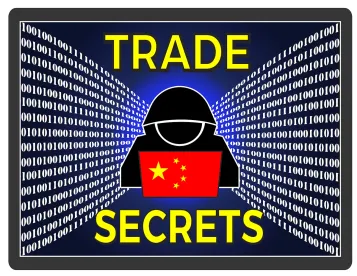On July 22, 2022, China’s National Intellectual Property Administration (CNIPA) released the Guidelines for Intellectual Property Protection at Exhibitions (展会知识产权保护指引). The Guidelines allow for setting up a workstation at an exhibition to accept intellectual property infringement complaints, provide judgment opinions on same, transfer evidence to relevant law enforcement departments, etc. If a respondent doesn’t not reply to a complaint within 24 hours of receipt, the complaint of infringement was confirmed via valid legal documents, or the respondent admits infringement, the exhibition organizer can take action including removing the exhibitor’s display.

Per Article 2, these guidelines apply to both online and in-person trade exhibitions, trade fairs, etc. held within the People’s Republic of China.
Per Article 7,
the intellectual property management department of the place where the exhibition is held may, at the request of the exhibition organizer, guide the exhibition organizer to check the intellectual property status of the participating projects.
Per Article 8,
the intellectual property management department of the place where the exhibition is held may, together with relevant departments, guide the exhibition organizer to set up workstations according to relevant national regulations and actual needs, and coordinate relevant staff, law enforcement personnel, professional technical personnel and legal professionals to enter the exhibition at the request of the exhibition organizer. workstation. The workstation mainly undertakes the following tasks:
(1) Accepting complaints related to intellectual property rights;
(2) Mediation of intellectual property infringement disputes during the exhibition;
(3) Providing consultation on laws, regulations and policies related to intellectual property rights;
(4) Provide judgment opinions on complaints of suspected intellectual property infringement, and coordinate the exhibition organizers to handle them;
(5) Transfer the relevant complaints and materials to the intellectual property management department of the place where the exhibition is held, and transfer the suspected illegal clues to the relevant law enforcement departments;
(6) To summarize and analyze the intellectual property protection information of the exhibition;
(7) Other relevant matters.
Per Article 12,
If a complaint is lodged with the workstation, the complaint materials shall generally include:
(1) An application for complaint, including the basic information of the complainant and the respondent, the facts, reasons and relevant evidence materials of the alleged infringement of intellectual property rights by the exhibitor;
(2) Valid intellectual property ownership certificate, including patent certificate, patent authorization announcement text, patent owner’s identity certificate, trademark registration certificate, trademark owner’s identity certificate, geographical indication announcement, certificate of legal user of special geographical indication sign and other Evidence of intellectual property legal status, etc.;
(3) If an agent is entrusted to make a complaint, the power of attorney and the identity certificate of the agent shall also be submitted. The power of attorney shall be signed or sealed by the principal, and shall record the entrusted matters and authority;
(4) Other necessary certification materials.
Workstations can provide links to uniform forms or web pages according to work needs.
Per Article 14,
Where the respondent fails to submit any written statement of opinions and evidential materials without any justifiable reason within 24 hours after receiving the notice of complaint, or the fact that the infringement related to an exhibition item reported by the respondent has been confirmed by an effective legal document, or the respondent has admitted the infringement, the workstation shall coordinate with the exhibition sponsor to take measures in a timely manner, including but not limited to the cancelation, cover-up, deletion, screening, and disconnection of network links, etc.
The full text of the Guidelines is available here (Chinese only).



 />i
/>i

